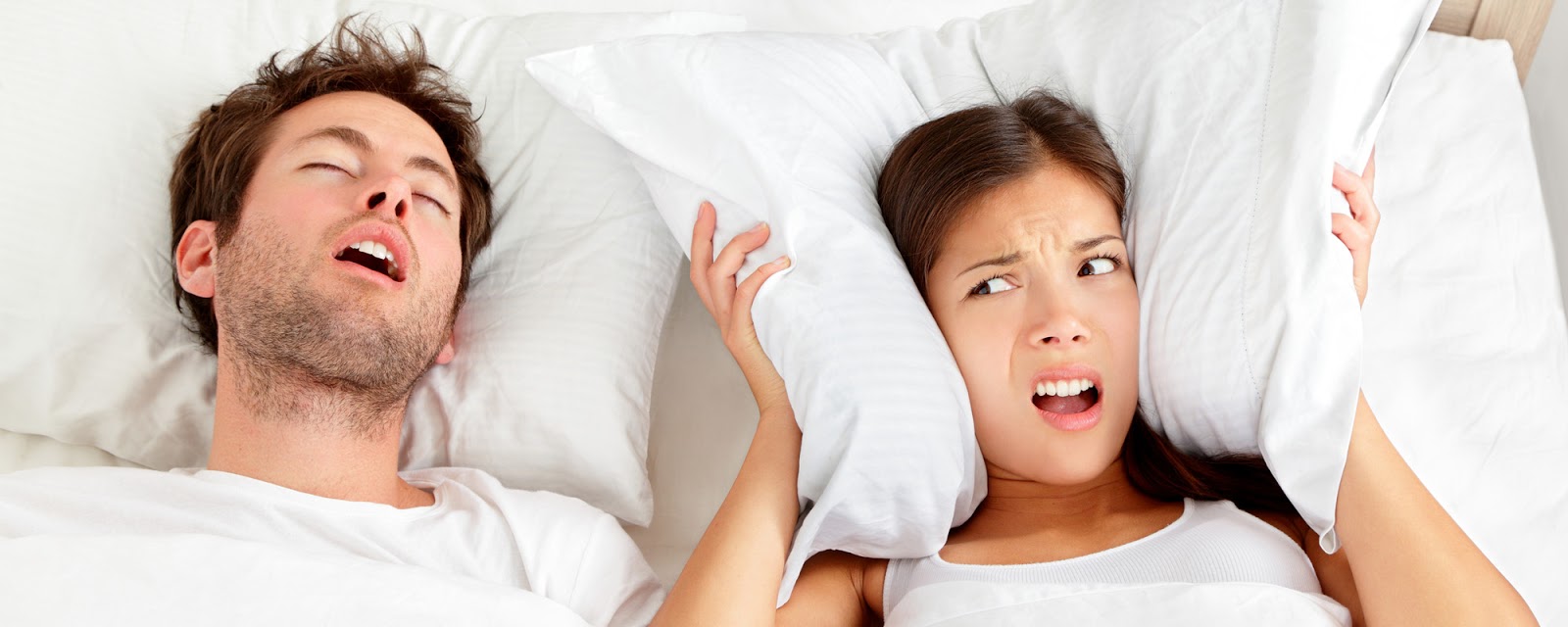The Pathway to Quality Sleep - CPAP Machines and Supplies Explained
Chronic diseases and disorders are something that will follow you for the rest of your life and although there's usually no cure for them you can at least treat them so the symptoms can become milder and make your life easier. This is usually the case with sleep apnea, a sleeping disorder that relaxes the throat muscles which prevents effective sleep form ever taking place. It definitely sounds scary but by using a CPAP machine you can rest assured your sleep is not going to be interrupted and airflow is going to be continuous. These machines are of immense help and so are their components.
Continuous positive airway pressure is what this machine is capable of providing in order to keep your airways open which otherwise would collapse and cause mild suffocation. This method has been in use since 1981 and it has also been proven to help eliminate snoring. CPAP machines and supplies work together to take in ambient air, filter it and bring it inside your airways, which makes this the most efficient way when it comes to treating sleep apnea.
Other than sleep apnea and its various forms, CPAP machines and supplies are also used in hospitals with patients that have experienced fluid overload in their lungs due to congestive heart failure. In the majority of cases, CPAP machines are used with patients that have OSA (Obstructive Sleep Apnea) which airways are easily bent due to a recessed chin or obesity.
These devices have become smaller and smaller as the years passed by and now most of them are no bigger than a toaster and newer ones produce almost no noise at all. There are CPAP devices that run on batteries and others that need to be constantly plugged in but they all do a good job and depending on the condition of your sleep apnea you may need a device with an auto titration function. This is basically what will automatically detect the pressure needed to keep your airways open but sometimes the pressure is predetermined by your sleep physician.
There is also a feature used to set a pressure ramp which allows you to have a lower pressure when falling asleep which will then steadily increase to the pressure that your physician has set, after a certain amount of time has passed or when you start breathing at a regular pace. Sophisticated CPAP machines and supplies also have an SD card slot so you can track your breathing and save your results which can then be sent to your physician through a cloud-based service.
There are three types of masks: full-face, nasal pillow and nasal masks. Full-face masks are the most convenient if you are someone who breathes through your mouth when sleeping but they are the most uncomfortable choice if you are somewhat claustrophobic. An excellent option for those of you who can't bear having your mouth and nose covered are nasal masks which aren't as obtrusive since they only cover the nose. The most unobtrusive solution are nasal pillow masks as they sit under the nose, unlike regular nasal masks which cover it completely. Masks need to have certain parts like cushioning and headgear replaced on a regular basis in order to keep comfort at the highest level possible.
Sometimes a nasal mask just isn't enough as some people experience dryness in the nose and mouth which is normal when there is a constant gush of air. A humidifier can be attached afterwards or come as an integral part of a CPAP device, which consists of a small plastic reservoir that needs to be filled with distilled water. Other humidifiers also come with a heated plate in order to help increase evaporation and the level of moisture entering the tubes. It's extremely important to keep this reservoir clean as mould and other respiratory infections can easily form but this happens only if you don't use the device for an extended period.
CPAP tubing comes usually 30cm long, made out of plastic and it looks a lot like the tubing found on a vacuum cleaner as it is also very flexible too. Of course, if the regular length isn't enough for you there are adaptors and connectors that help make CPAP machines and supplies fit your needs but know that they can reduce pressure if you extend the length too much. Since the tubing makes a safe pathway for the air to go from the machine and to the mask it is important to control temperature settings in order to prevent condensation. Tubing also needs to be replaced so there's no bacteria and a build-up of mould that can cause infections or prevent the device from functioning properly.
There's usually only one filter found in CPAP machines but other more sophisticated devices have an added ultra-fine filter too. These two filters make for even better elimination of particles but that isn't the only way to provide clean air. A clean filter can also have a big impact on air quality, hence why you'll need to change them regularly and always have spare ones aside.
What is CPAP?
Continuous positive airway pressure is what this machine is capable of providing in order to keep your airways open which otherwise would collapse and cause mild suffocation. This method has been in use since 1981 and it has also been proven to help eliminate snoring. CPAP machines and supplies work together to take in ambient air, filter it and bring it inside your airways, which makes this the most efficient way when it comes to treating sleep apnea.
Other than sleep apnea and its various forms, CPAP machines and supplies are also used in hospitals with patients that have experienced fluid overload in their lungs due to congestive heart failure. In the majority of cases, CPAP machines are used with patients that have OSA (Obstructive Sleep Apnea) which airways are easily bent due to a recessed chin or obesity.
Machine
These devices have become smaller and smaller as the years passed by and now most of them are no bigger than a toaster and newer ones produce almost no noise at all. There are CPAP devices that run on batteries and others that need to be constantly plugged in but they all do a good job and depending on the condition of your sleep apnea you may need a device with an auto titration function. This is basically what will automatically detect the pressure needed to keep your airways open but sometimes the pressure is predetermined by your sleep physician.
There is also a feature used to set a pressure ramp which allows you to have a lower pressure when falling asleep which will then steadily increase to the pressure that your physician has set, after a certain amount of time has passed or when you start breathing at a regular pace. Sophisticated CPAP machines and supplies also have an SD card slot so you can track your breathing and save your results which can then be sent to your physician through a cloud-based service.
Mask
There are three types of masks: full-face, nasal pillow and nasal masks. Full-face masks are the most convenient if you are someone who breathes through your mouth when sleeping but they are the most uncomfortable choice if you are somewhat claustrophobic. An excellent option for those of you who can't bear having your mouth and nose covered are nasal masks which aren't as obtrusive since they only cover the nose. The most unobtrusive solution are nasal pillow masks as they sit under the nose, unlike regular nasal masks which cover it completely. Masks need to have certain parts like cushioning and headgear replaced on a regular basis in order to keep comfort at the highest level possible.
Humidifier
Sometimes a nasal mask just isn't enough as some people experience dryness in the nose and mouth which is normal when there is a constant gush of air. A humidifier can be attached afterwards or come as an integral part of a CPAP device, which consists of a small plastic reservoir that needs to be filled with distilled water. Other humidifiers also come with a heated plate in order to help increase evaporation and the level of moisture entering the tubes. It's extremely important to keep this reservoir clean as mould and other respiratory infections can easily form but this happens only if you don't use the device for an extended period.
Tubing
CPAP tubing comes usually 30cm long, made out of plastic and it looks a lot like the tubing found on a vacuum cleaner as it is also very flexible too. Of course, if the regular length isn't enough for you there are adaptors and connectors that help make CPAP machines and supplies fit your needs but know that they can reduce pressure if you extend the length too much. Since the tubing makes a safe pathway for the air to go from the machine and to the mask it is important to control temperature settings in order to prevent condensation. Tubing also needs to be replaced so there's no bacteria and a build-up of mould that can cause infections or prevent the device from functioning properly.
Filter(s)
There's usually only one filter found in CPAP machines but other more sophisticated devices have an added ultra-fine filter too. These two filters make for even better elimination of particles but that isn't the only way to provide clean air. A clean filter can also have a big impact on air quality, hence why you'll need to change them regularly and always have spare ones aside.









Comments
Post a Comment